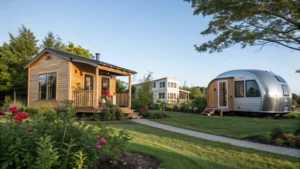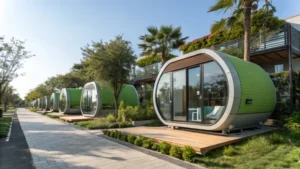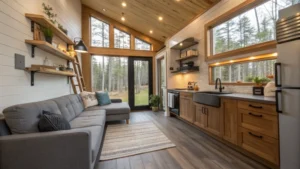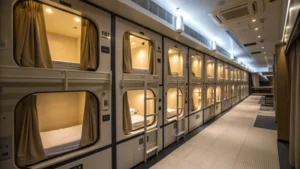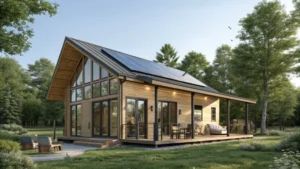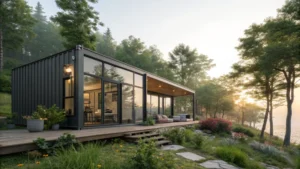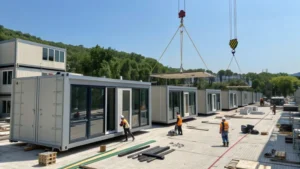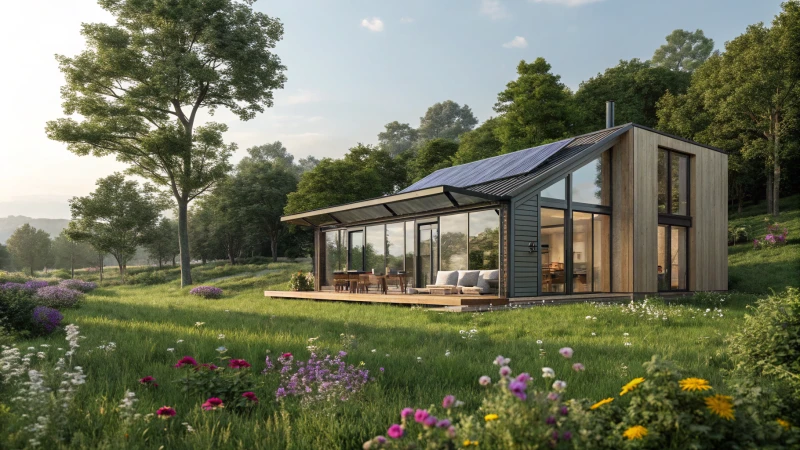
Ever wondered just how long modular homes can last? Let me share what I've learned from my own experiences.
Modular homes can last 50 to 100 years or more, depending on construction quality, materials, and maintenance. These homes are crafted to meet or surpass traditional building standards, offering a durable housing choice that endures over time.
I remember when I first considered a modular home for a project. The idea of investing in something that could stand the test of time was both exciting and daunting. What truly makes these homes last? Well, it turns out, it's not just about the solid framework or the high-grade materials like steel and treated wood. It's also about the love and care you put into maintaining them. Regular check-ups, like roof inspections and system updates, are crucial.
And then there's the environmental factor. My heart always skips a beat when I think about how these homes can adapt and thrive even in challenging climates. With a bit of attention and some strategic upgrades over time, they can easily become not just a house, but a long-lasting home filled with memories.
Modular homes last longer than traditional homes.False
Both modular and traditional homes can last 50-100 years with proper care.
Maintenance impacts modular home lifespan significantly.True
Regular maintenance is crucial to ensure the longevity of modular homes.
How Does Construction Quality Affect Modular Home Longevity?
Imagine your home standing strong for generations, weathering storms and changes, all thanks to the quality of its construction.
A modular home's longevity, stretching from 50 to 100 years, is significantly influenced by its construction quality. This includes robust material selection and strict adherence to building standards, ensuring durability against environmental stresses.

I remember when I first walked through a modular home factory, the precision and care that went into every step amazed me. It was like watching a giant jigsaw puzzle being assembled, piece by piece, under a controlled environment. This experience highlighted to me the importance of each stage in ensuring a home’s longevity.
Importance of Material Selection
The choice of materials is foundational to any construction project. In modular homes, using high-quality materials1 like treated wood and reinforced steel not only ensures strength but also improves resistance to weathering.
| Material | Benefit |
|---|---|
| Treated Wood | Resists pests and moisture |
| Reinforced Steel | Provides structural integrity |
I’ve learned over time that choosing materials aligned with the local climate is crucial. My friend once shared how they had to replace parts of their home because they used materials unsuitable for their humid environment.
Adherence to Building Standards
Following building codes2 and standards ensures that modular homes are constructed with safety and durability in mind. These codes often dictate the minimum standards for structural integrity, electrical systems, and more.
Ensuring that manufacturers adhere to these guidelines can make the difference between a home that lasts decades and one that requires frequent repairs. Regular inspections during construction phases further assure compliance.
Role of Quality Control During Manufacturing
The manufacturing process of modular homes involves assembling parts in a factory setting before transporting them to the site. This controlled environment allows for rigorous quality control measures3.
Incorporating technology such as computer-aided design (CAD) helps in maintaining precision and reducing human error. Regular checks and balances ensure that each module meets quality expectations before leaving the factory.
Impact of Skilled Labor and Craftsmanship
The expertise of the labor force involved in constructing modular homes also plays a crucial role. Skilled craftsmen can identify potential issues early on, reducing the risk of defects.
Investing in workforce training and development can lead to improved craftsmanship, ultimately enhancing the longevity of modular homes. Skill development programs4 for workers can also be beneficial.
Maintenance and Upgrades
While construction quality lays the foundation for longevity, regular maintenance is vital. Routine inspections of roofs, foundations, and systems like plumbing and electrical can prevent minor issues from becoming major problems.
Upgrades are another way to extend a home's lifespan. For example, integrating smart home technologies or energy-efficient systems can not only enhance functionality but also improve resale value.
| Maintenance Task | Frequency |
|---|---|
| Roof Inspection | Annually |
| System Checks | Every 3-5 years |
| Foundation Evaluation | Every 5-10 years |
Understanding how construction quality affects modular home longevity involves looking at various aspects from material selection to skilled labor. Each component plays an integral role in ensuring that these homes are not only durable but also adaptable to future needs.
High-quality materials extend modular home lifespan.True
Using treated wood and reinforced steel enhances strength and resistance.
Ignoring building codes affects modular home longevity.True
Non-compliance with codes can lead to frequent repairs and safety issues.
What Materials Are Used in Durable Modular Homes?
When it comes to building a modular home that can withstand the test of time, choosing the right materials is crucial. Let's explore what makes these homes both resilient and sustainable.
Durable modular homes are built with materials such as steel, concrete, and treated wood. Steel offers strong structural support, concrete provides stability, and treated wood adds flexibility. These materials are designed to resist weathering, ensuring the home’s longevity.
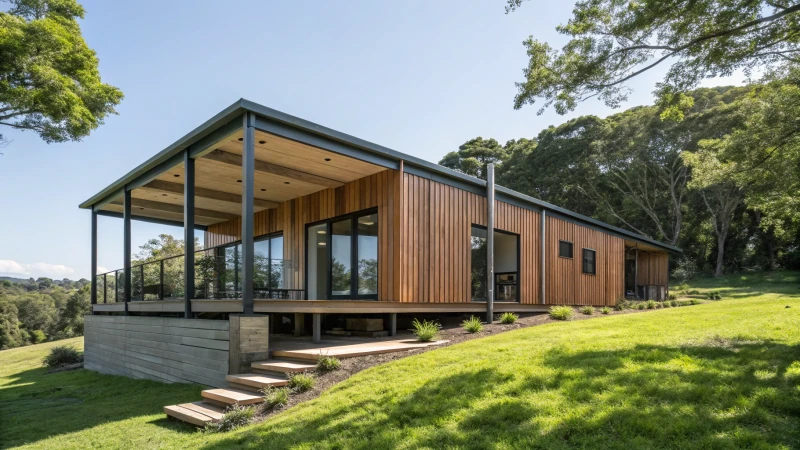
Steel: The Backbone of Strength
Growing up, I always marveled at how certain buildings seemed to endure everything nature threw at them. It wasn't until I started working in the modular housing industry that I truly understood the magic behind these durable structures.
When I first saw a modular home being constructed with steel, I was struck by its sheer strength. Steel's impressive strength-to-weight ratio is like that of a superhero—strong yet light. It's fascinating how this material ensures a home stands firm against fierce winds or heavy snow. Many of my clients appreciate steel for framing5 because it's not just durable but also resistant to pests and fire, which means fewer worries and maintenance hassles.
Concrete: A Foundation for Stability
Concrete is another material that caught my attention early on. Its use in foundations and walls is not just about strength but also about stability. I remember visiting a site where the concrete walls seemed to hug the earth with a promise of permanence. The thermal mass of concrete keeps indoor temperatures just right, saving on energy costs—a feature that many eco-conscious clients love. Plus, using reinforced concrete6 boosts the home's resilience against earthquakes.
Treated Wood: Flexibility and Versatility
There’s something nostalgic about wood that reminds me of my childhood treehouse adventures. In modular homes, treated wood provides flexibility and ease of installation that I find quite charming. The treatment process shields the wood from decay, insects, and moisture, making treated wood7 not only practical but also eco-friendly.
Composite Materials: Balancing Strength and Weight
I’ve always been impressed by how composite materials, like fiber cement panels and engineered wood products, bring together strength and lightness. They’re like modern-day armor for homes, offering durability without the weight, ideal for cladding and roofing.
Sustainable Options: Eco-Friendly Innovations
For those who are deeply passionate about sustainability (as I am), materials like recycled steel or bamboo are incredible options. They not only lessen environmental footprints but also enhance energy efficiency. Homes built with green materials8 can boast better insulation and lower energy bills—a win-win for the planet and homeowners alike.
Through my journey in modular home construction, I've come to see that selecting the right materials is more than a technical decision—it's about crafting spaces where memories can be made safely and sustainably.
| Material | Key Benefits |
|---|---|
| Steel | High strength, pest/fire resistant |
| Concrete | Thermal mass, water/seismic resistance |
| Treated Wood | Flexibility, eco-friendly |
| Composites | Lightweight, durable |
| Recycled/Bamboo | Sustainable, energy-efficient |
Steel is used for framing in modular homes.True
Steel is chosen for its strength and resistance to pests and fire.
Concrete is not used in modular home foundations.False
Concrete is crucial for foundations, offering stability and longevity.
Why is Maintenance Essential for Extending the Life of Modular Homes?
Ever thought about how a little TLC could make your modular home last a lifetime?
Maintenance plays a crucial role in extending the lifespan of modular homes by ensuring their structural integrity and functionality. Regular inspections and timely repairs can prevent minor issues from escalating into major problems, ultimately safeguarding your investment.
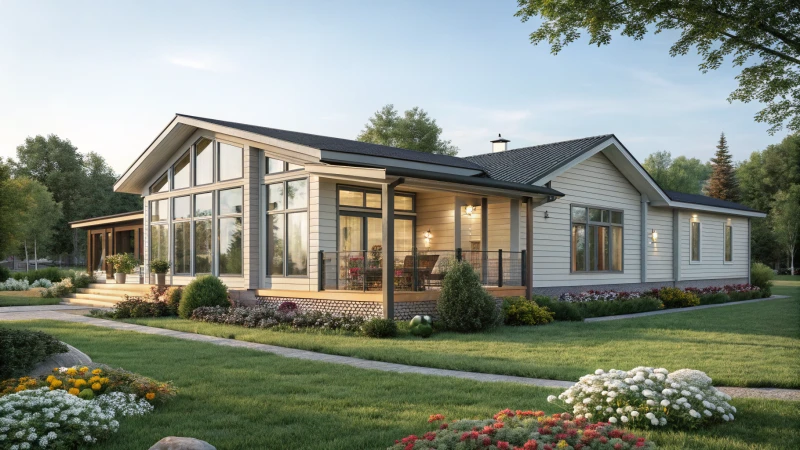
Key Areas of Maintenance for Modular Homes
Exterior and Structural Maintenance
I remember the first time I climbed up to inspect the roof of my modular home. It was right after a particularly fierce storm, and I was anxious about potential damage. Regularly inspecting the exterior, especially the roof, siding, and foundation, is something I've learned the hard way. These elements are crucial in preventing water damage9 and ensuring structural integrity. Seasonal checks help me catch any issues before they become costly repairs.
Interior Systems Checks
Just like traditional homes, modular homes rely heavily on internal systems—plumbing, electrical, and HVAC—for comfort and safety. It's almost like keeping an eye on your car's engine; routine maintenance ensures everything runs smoothly. I make it a point to replace filters, check for leaks, and upgrade outdated components10 as needed.
| System | Maintenance Task | Frequency |
|---|---|---|
| HVAC | Filter replacement | Monthly |
| Plumbing | Leak checks | Quarterly |
| Electrical | Wiring inspections | Annually |
Environmental Considerations
Living in an area prone to harsh weather made me quickly realize how much the environment affects maintenance needs. Homes in these conditions need more frequent checks. Understanding local challenges helps me tailor my maintenance plan, which is essential to extend my home's lifespan11.
Importance of Professional Inspections
One thing I can't stress enough is the value of hiring professionals for annual inspections. Their expertise helps identify issues that might escape my untrained eyes. Investing in professional assessments12 can save significant money in the long run by preventing costly repairs.
DIY vs. Professional Maintenance
While I'm pretty handy with cleaning gutters and replacing air filters, some tasks are best left to the experts. Understanding when to call in a pro is crucial for maintaining safety and structural integrity.
- DIY Tasks: Cleaning gutters, replacing air filters
- Professional Tasks: Roof repairs, electrical wiring adjustments
Regular maintenance tailored to your modular home's specific needs ensures longevity and continued functionality, safeguarding your investment for years to come.
Regular roof inspections prevent water damage in modular homes.True
Roof inspections help identify leaks early, preventing water damage.
DIY tasks are sufficient for all modular home maintenance needs.False
Some tasks require professional expertise to ensure safety and integrity.
How Does Climate Affect the Lifespan of Modular Homes?
Imagine investing in a home that promises durability but is at the mercy of Mother Nature. Modular homes, while strong, face the whims of weather.
Environmental factors like humidity, temperature changes, and exposure to natural elements affect modular homes' durability. Choosing the right materials and regular maintenance can mitigate these effects, extending their lifespan.
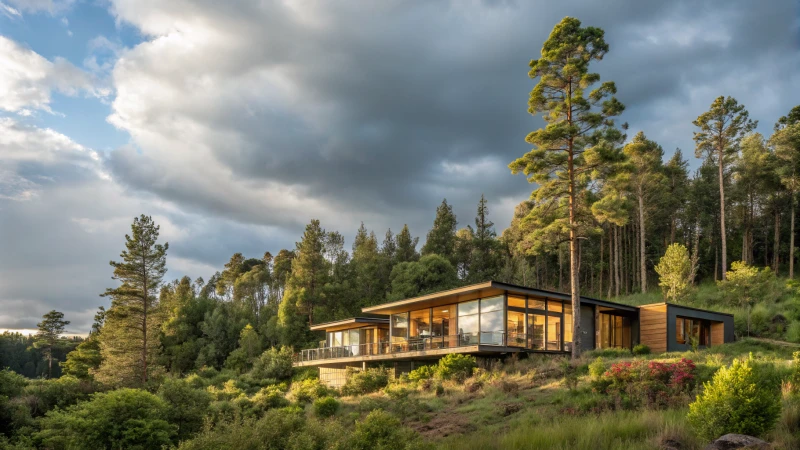
Climate Factors Affecting Modular Homes
When I first considered a modular home, I imagined it like a fortress standing strong against nature's onslaught. But then reality hit me—these homes are as susceptible to the elements as any other. Temperature fluctuations became my prime concern after hearing about a friend whose home materials expanded and contracted so much they needed frequent repairs. This expansion and contraction in different climates can cause wear over time. If you live in areas where extreme cold13 is a part of life, insulation becomes vital, not just for comfort but for preventing heat loss and structural damage.
Another lesson I learned was about humidity levels. I remember visiting a modular home in a humid region and noticing mold growth—something I desperately wanted to avoid. High humidity can lead to moisture accumulation, weakening wooden components or even causing mold. On the flip side, living in an arid climate might make your materials brittle and more prone to cracking.
| Climate Condition | Potential Impact |
|---|---|
| High Humidity | Mold growth, wood weakening |
| Low Humidity | Material brittleness |
| Temperature Swings | Material expansion/contraction |
Environmental Conditions and Site Selection
Site selection is another critical factor, something I learned the hard way. A friend once shared how his modular home faced issues because it was built in a flood-prone area without proper precautions. Homes in such areas need elevated foundations or specialized waterproof materials to stand the test of time. And if you're considering a windy locale, reinforced structures or aerodynamic designs become essential to ease pressure on the walls and roof.
Choosing materials wisely was another revelation. Using treated wood or weather-resistant siding can provide an extra layer of protection against moisture and pests—like steel frames in termite-heavy areas.
Maintenance Strategies for Longevity
Regular maintenance has become my mantra for ensuring my modular home lasts. Periodic inspections for leaks, cracks, or structural weaknesses, especially after severe weather events, are a must. If you're near the coast, salt corrosion can be a hidden enemy—requiring frequent checks14 and protective coatings.
I’ve also started taking proactive measures like installing dehumidifiers in humid climates or using UV-resistant paints to reduce weathering in sunny regions. These small actions can significantly impact how long your modular home remains durable and functional across various climate conditions.
High humidity causes mold in modular homes.True
High humidity leads to moisture accumulation, promoting mold growth.
Steel frames are ineffective against termites.False
Steel frames resist termite activity, unlike untreated wood.
Conclusion
Modular homes can last 50 to 100 years with proper maintenance, quality materials, and adherence to building standards, making them a durable housing option.
-
Learn why using high-quality materials boosts durability and weather resistance in modular homes. ↩
-
Explore how building codes ensure safety and durability in modular home construction. ↩
-
Discover the importance of quality checks during modular home manufacturing for longevity. ↩
-
Understand how training programs enhance craftsmanship in modular home construction. ↩
-
Explore why steel framing is favored for its durability and pest resistance. ↩
-
Learn how reinforced concrete enhances seismic resistance and longevity. ↩
-
Discover the protective qualities of treated wood against rot and insects. ↩
-
Find out how green materials improve energy efficiency and sustainability. ↩
-
Learn techniques to safeguard your home from water-related damages by clicking this link. ↩
-
Explore essential upgrades for internal systems to enhance efficiency and safety. ↩
-
Discover how different climates impact modular homes and necessary maintenance strategies. ↩
-
Understand why professional inspections are crucial for identifying hidden issues early. ↩
-
Understanding how extreme cold affects building materials can help choose suitable insulation and construction techniques. ↩
-
Coastal homes face unique challenges; these tips can help mitigate salt corrosion and weather damage. ↩



